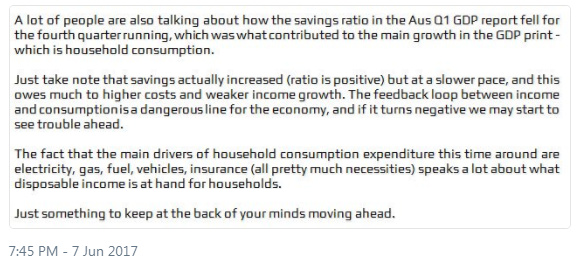The aussie has been one of the worst performing major currencies over the last 3 months

The AUD was one of the darlings of the currency market up until August. But over the last 3 months, it's been downhill after temporarily breaching 0.8000 against the USD - dropping 5%.
So, what exactly has held the AUD back?
The RBA met in July and decided that they were not going to follow the Fed, ECB, and Bank of Canada in moving towards tightening monetary policy. But yet, the AUD rallied further. The real decline started to come only when there was a possibility that the RBA may not get to decide whether or not it would like to raise rates at all.
Employment data has been the solid point in the economy this year. But that hasn't really translated to inflation. The latest reading in October for the trimmed mean CPI was 1.8% y/y, and that is still below the RBA's target inflation band of 2-3%.
Adding to that, we're starting to see the household consumption/savings issue start coming into play. I talked about it earlier in the year here:

When you look at Australia retail sales data over the last few months, you can see a trend starting to develop where consumers are not translating jobs into spending/consumption. The last three months has seen retail sales come in below expectations, with lower revisions in the August and September data.
So, what's next?
From a trade-weighted index perspective, the currency has moved to its lowest point since June. But the key driver will still be inflation data, and the RBA's communication. I've mentioned before about the pain that narrowing yield spreads could do on the AUD, and that's another reason to think that things could still look worse for the commodity currency.
If the Fed starts to diverge further from the RBA in terms of monetary policy, especially if US yields start picking up again, then we may yet see the AUD get left behind in the dust.



